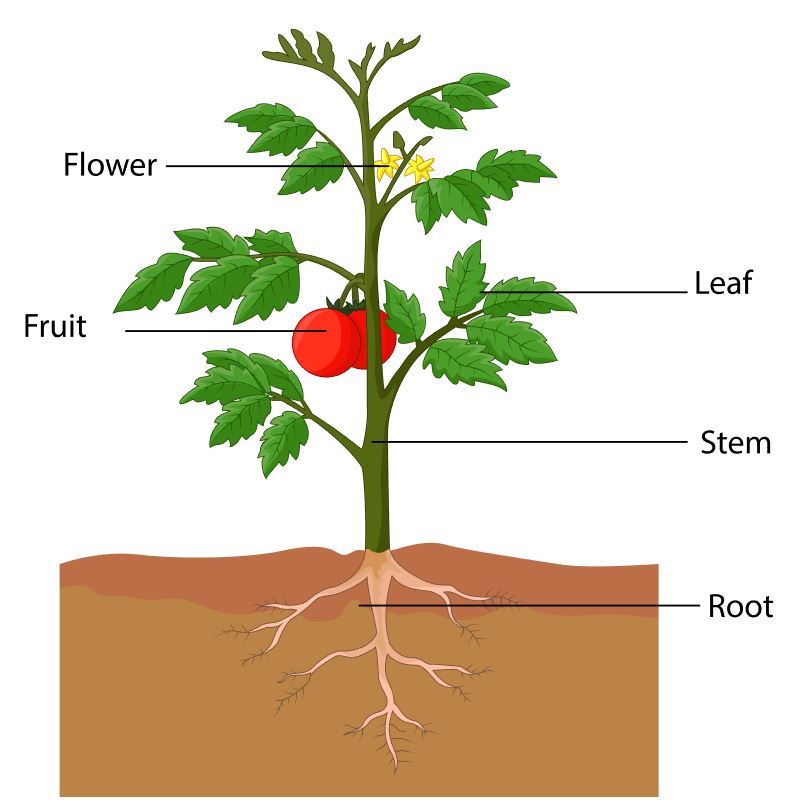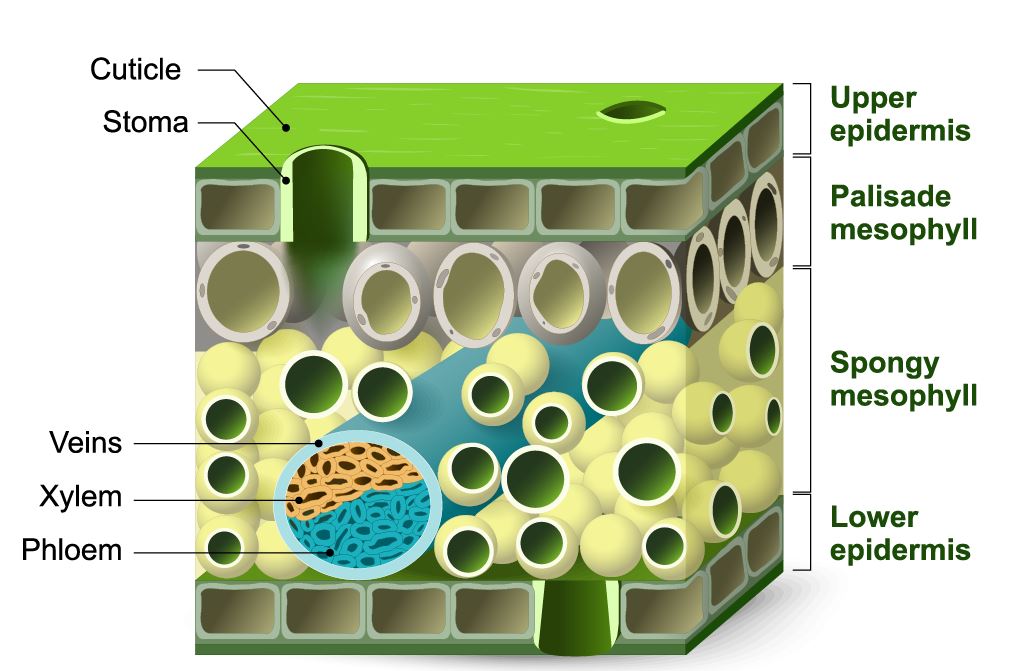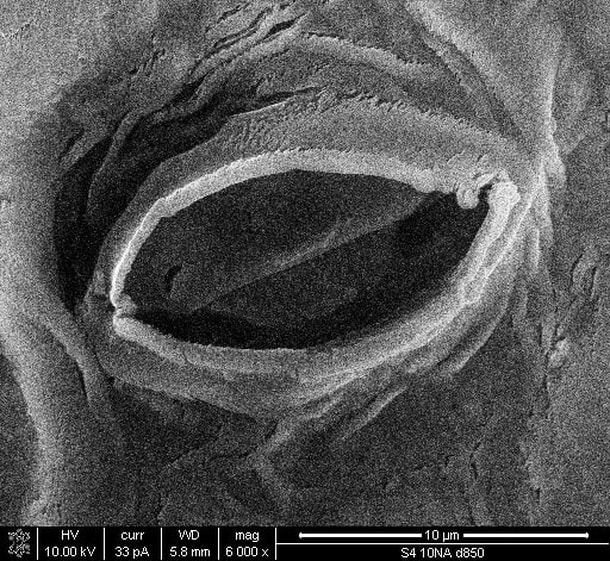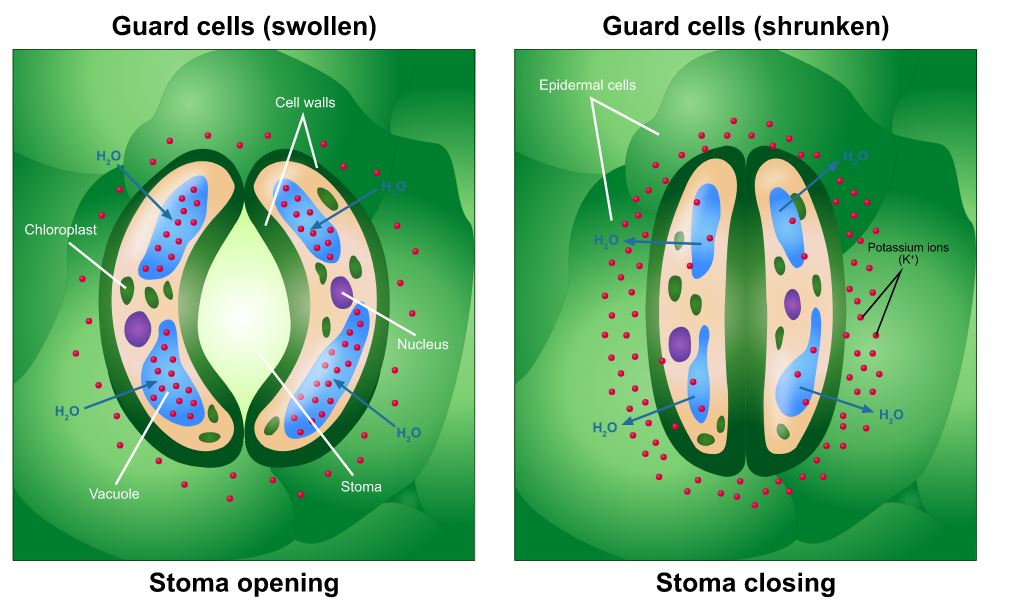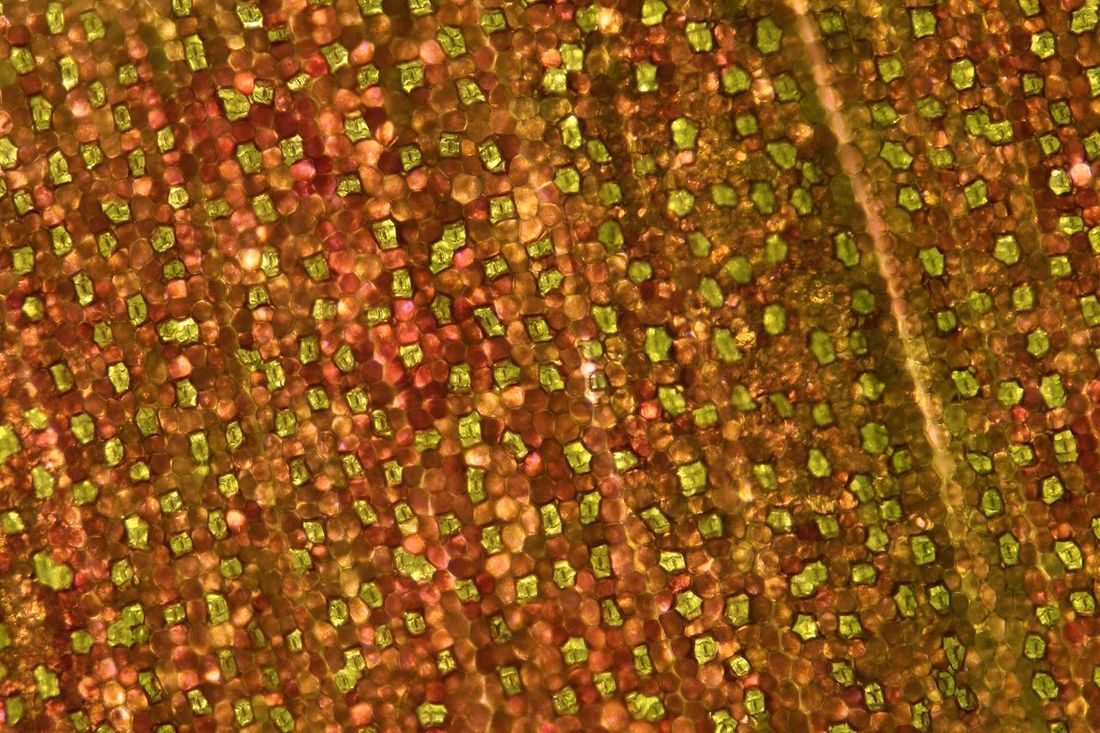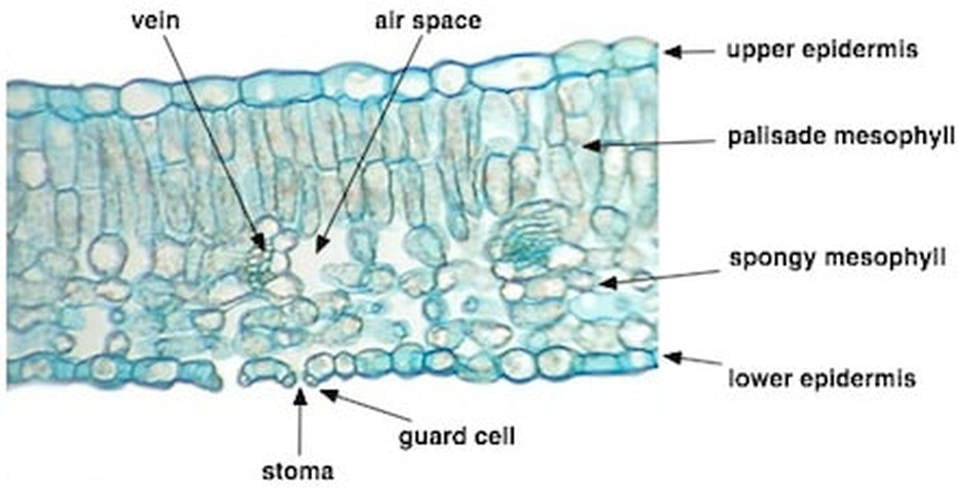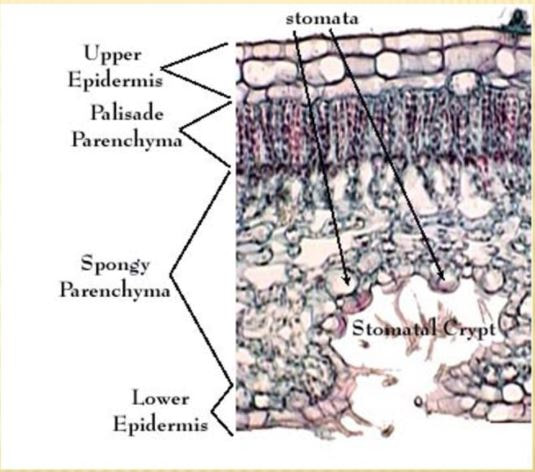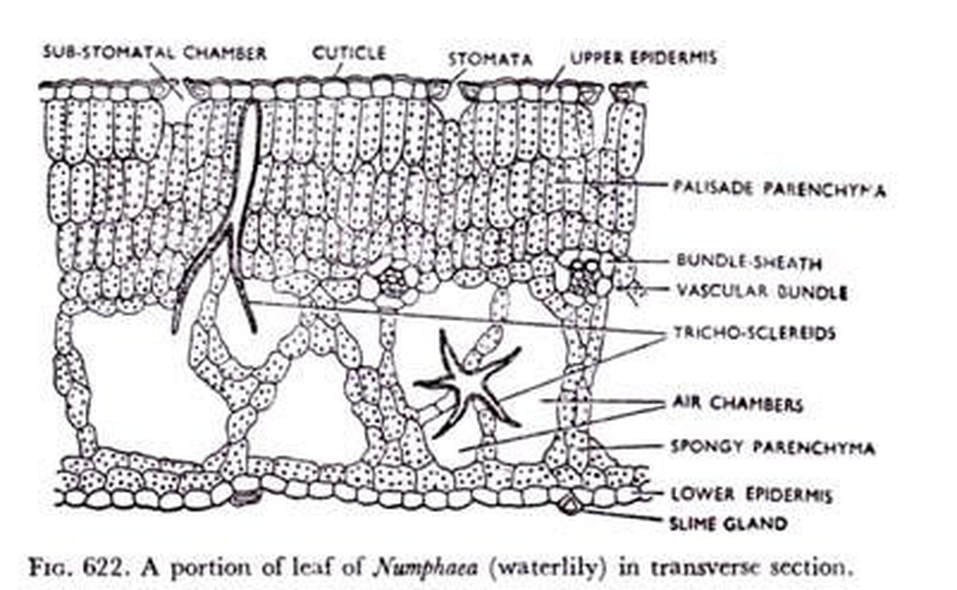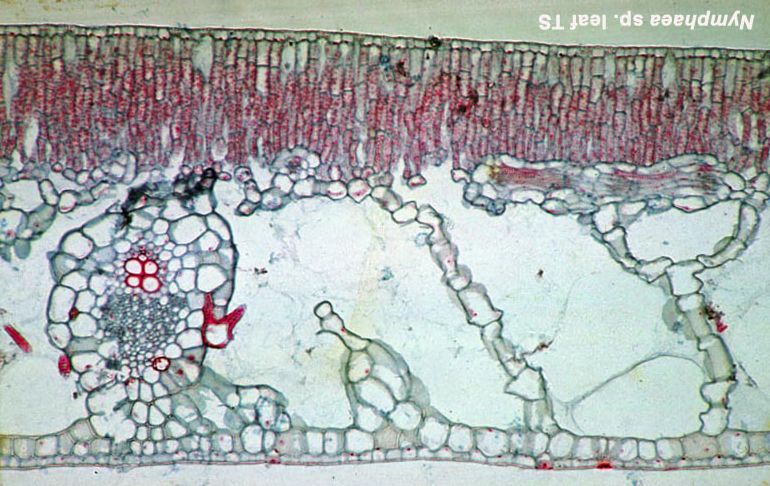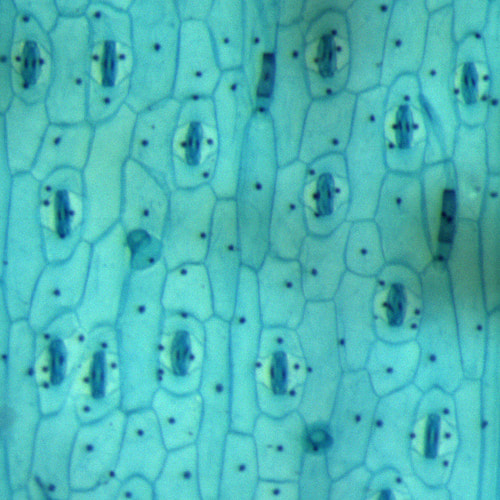Microscopic Plant Adaptations
Microscopic Plant Adaptations
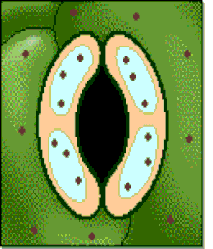
Stomata are cellular pores on the surface of plant leaves (mostly on the underside of the leaf).
STOMATA OPEN TO... They open to allow the uptake of carbon dioxide, the release of oxygen and allow water evaporation from the plant to occur.
STOMATA CLOSE TO... They close to limit water loss.
Tissue Layers of the Leaf
Stoma (singular) Stomata (plural)
STOMATA OPEN TO... They open to allow the uptake of carbon dioxide, the release of oxygen and allow water evaporation from the plant to occur.
STOMATA CLOSE TO... They close to limit water loss.
Tissue Layers of the Leaf
Stoma (singular) Stomata (plural)
- The epidermis consists of the upper and lower epidermis; it aids in the regulation of gas exchange via stomata.
- The epidermis secretes a waxy substance that lays on top of the leaf and is known as the cuticle.
- The cuticle is located outside the epidermis and protects against water loss
- Palisade cells are plant cells located right below the upper epidermis and cuticle. THIS IS WHERE PHOTOSYNTHESIS TAKES PLACE!
- The spongy mesophyll cell layer is beneath the pallisades.
The Anatomy of a Plant Leaf
Layers of the Leaf
Epidermis
The (upper) epidermis of plant leaves function to form a boundary between the plant and the external environment. The epidermis serves several functions:
- protects against water loss
- regulates gas exchange
- secretes metabolic compounds
- absorbs water and mineral nutrients in roots
The upper epidermis of the leaf produces a waxy layer, called the cuticle. The cuticle is a waxy, waterproof barrier thar protects against water loss.
Palisades Cell Layer
The palisade s cell layer lies just beneath the protective upper epidermis. The palisades layer is where photosynthesis takes place within the leaf.
This tissue is where 80% of the photosynthesis takes place in the leaf. The palisade cells have many chloroplasts in their cytoplasm and the box-like shape and arrangement of these cells ensures they are packed tightly together.
Spongy Mesophyll
Below the palisade layer is the spongy layer, which contains cells that are more spread out, allowing for air pockets.The spongy mesophyll allows for gas exchange. Namely, carbon dioxide (CO2) which is needed for photosynthesis, and oxygen (O2) which is given off as a product of photosynthesis.
This tissue contains large air spaces which are linked to the atmosphere outside the leaf through microscopic pores called stomata on the lower surface. Spongy mesophyll cells also contain chloroplasts and photosynthesis occurs here too. The air spaces reduce the distance carbon dioxide has to diffuse to get into the mesophyll cells and the fact that these cells have fairly thin cell walls which are coated with a film of water together means that gas exchange between air space and mesophyll is speeded up.
STOMATA
|
Stoma (singular) or stomata (plural) are openings in the leaves of plants that allow for gas exchange. Stomata are usually found on the under-surface of the leaf. A single stoma has a chloroplast, a cell wall, a vacuole and a nucleus.
Carbon Dioxide that is needed for photosynthesis enters the plant through the stomata. Excess oxygen is released from the plant through the stomata as one of the waste products of photosynthesis. Stomata can also gain water from the atmosphere through open stomata and the plant can conserve water by closing stomata to prevent dehydration. |
The stoma pore is formed by a pair of cells known as guard cells. These adjust the size of the opening by opening or closing. Guard cells reside in the epidermis of leaves, stems and other organs that are used to control gas exchange.
A microscopic view of the underside of a leaf. In this species (Tradescantia zebrina) the guard cells of the stomata are green because they contain chlorophyll while the epidermal cells are chlorophyll-free and contain red pigments. |
Cross-section of a Ligustrum Leaf (Found in Sunny Yards)
- The Epidermis of the Ligustrium leaf is 1 cell-layer thick.
Cross-Section of a Nerium Leaf (Found in Dry Environments)
|
Adaptations of Wetland Plants
Wetland plants are also called hydrophytic plants, because they live in water. Hydrophytic plants have developed special adaptations that enables them to survive the conditions of environmental stress experienced by living in the wetlands. Stressful environmental conditions brought on by living in wetlands include:
1. fluctuations in water levels
2. permanent saturation with water
3. decreased oxygen availability
1. fluctuations in water levels
2. permanent saturation with water
3. decreased oxygen availability
There are many types of plants that are hydrophytic, including many types of herbaceous plants, shrubs, and trees.- Herbaceous plants: these are non-woody plants and can be categorized by their location in the water:
- e eerrgent plants are erect plants that are rooted in sediment but extend out of the water. These include cattails, and reeds.
- Floating plants may be either free-floating or rootedin the soil. Their leaves, flowers, and fruit float on the surface of water.
- Submergent plants grow completely under the surface of the water.
- Shrubs: these ar low,woody plants that are less than 20 feet high and have permanent stems instead of a single trunk.
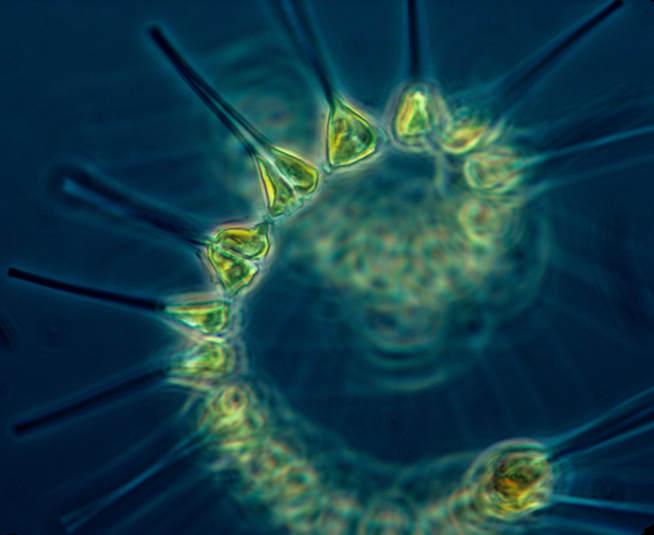
- Phytoplankton: this is a microscopic algae and chlorophyll containing bacteria that live on or near the surface of the water.
Phytoplankton are extremely valuable to ecosystems. They provide produces the majority of the world's oxygen and are the basis for any aquatic food chain.
TERMS
Phytoplankton are extremely valuable to ecosystems. They provide produces the majority of the world's oxygen and are the basis for any aquatic food chain.
TERMS
ADAPTATIONS OF WETLAND PLANTS
1. Many wetland plants have special air or pore spaces in their roots and stems called aerenchyma through which oxygen can enter the plant and be transported to its roots.
2. Some plants have hollowed stems that transport oxygen to the roots
3. Woody plants pump oxygen from their stems to their roots.
4. Many wetland trees have very shallow root systems, swollen trunks, or roots that grow above the ground. Examples of this are the cypress knees seen in swamps.
5. Some plants develop adaptations that allow them to tolerate salt water. These plants are called halophytes. Some adaptations of these plants are:
- develop ways to reduce salt intake by the roots called salt water exclusion
- some take the salt in but have salt-secreting glands to remove the salt
- Some develop salt concentrating glands like fleshy leaves. They collect salt in these leaves and then shed them
- Some plants have succulent leaves, store water, and then use it to dilute the concentration of salt
- Some plants have salt water proofed theirselves by developing a waxy covering
- Some reduce their leaf surface to minimize exposure to salt
- some isolate salt into internal organs
1. Many wetland plants have special air or pore spaces in their roots and stems called aerenchyma through which oxygen can enter the plant and be transported to its roots.
2. Some plants have hollowed stems that transport oxygen to the roots
3. Woody plants pump oxygen from their stems to their roots.
4. Many wetland trees have very shallow root systems, swollen trunks, or roots that grow above the ground. Examples of this are the cypress knees seen in swamps.
5. Some plants develop adaptations that allow them to tolerate salt water. These plants are called halophytes. Some adaptations of these plants are:
- develop ways to reduce salt intake by the roots called salt water exclusion
- some take the salt in but have salt-secreting glands to remove the salt
- Some develop salt concentrating glands like fleshy leaves. They collect salt in these leaves and then shed them
- Some plants have succulent leaves, store water, and then use it to dilute the concentration of salt
- Some plants have salt water proofed theirselves by developing a waxy covering
- Some reduce their leaf surface to minimize exposure to salt
- some isolate salt into internal organs
Cross-Section of a Nymphaea Leaf (wetland plant)
Tradescantia (Shady Environments)
COMMON PLANTS OF COASTAL SALT AND BRACKISH MARSHES (common names) |
Bayberry (wax myrtle |
Bid Cordgrass |
Glasswort |
Knotgrasses |
Prickly Pear |
Smooth Cordgrass |
Spike Rushes |
Swithgrass |

